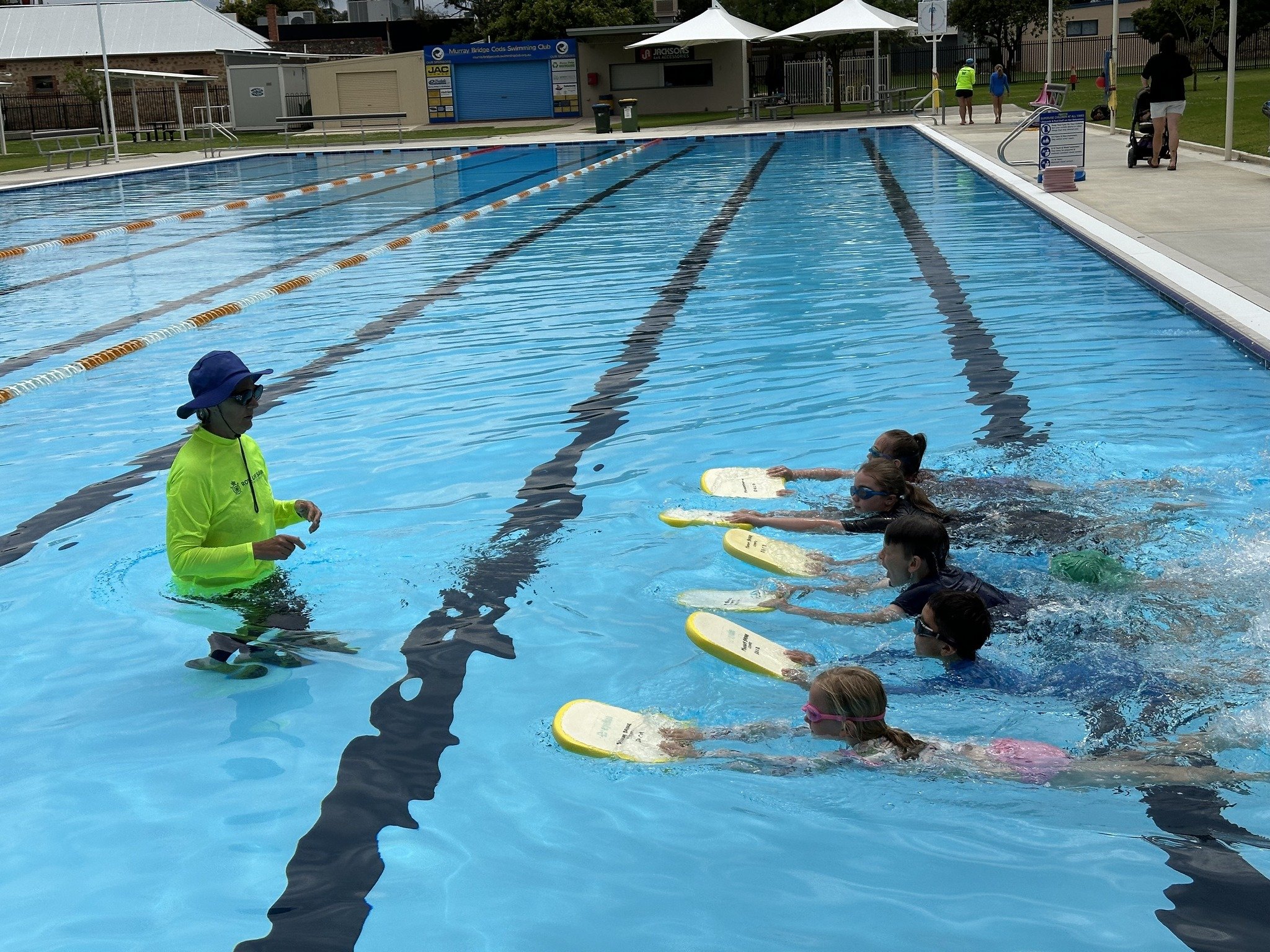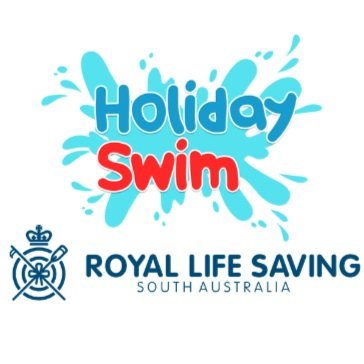
Level Guide
For the 2025/26 Holiday Swim program, the newly adapted Swim and Survive program will be implemented.
How to use the level guide: The activities outlined in each level are what the participants will be working towards if enrolled in that level. Participants should be enrolled into a class that is suitable for their skill level. While there is a recommended age on our booking website, if a participant is not up to that skill level, please choose a level that is suitable for them. If after the first day, you feel your child is in an incorrect level, please talk to your child’s instructor.
Please note: Participants may be required to bring extra clothing to wear over the top of their bathers for some of their activities, they may also be asked to bring a lifejacket if they own one. You are not expected to purchase a lifejacket to be able to participate in these lesson. Instructors will inform the participants when they will need to bring extra items to lessons. Any extra items will not be required on the first day.
Little Wonders (30 minute lessons - under 5 year olds)
-
(12 months to 36 months - Parent/Guardian in the water)
Enter and Exit the Water
Enter the water - return to the edge and exit
Hand walk along the edge
Float on Back
Float on Front
Orientate the body using rotation skills
Glide
Move arms
Move Legs
Move arms and legs through the water
Experience water on the head and face
Submerge
Bubbles
Levels 1 to 11 (from 5 years old)
-
Identify where water can be found around the home
Identify safe areas for entering and exiting water
Enter and exit the water
Float on front and back using a buoyant aid
Orientate the body using rotation with a buoyant aid
Kick on front and back using a buoyant aid
Glide on front and back
Move 3 metres continuously using arms and legs
Submerge the body and exhale in the water
Identify people who can help in an emergency
-
Identify dangers in aquatic environments around the home
Slide in entry and exit
Float on front and back and recover
Tread water using a buoyant aid
Fit a lifejacket and float
Glide on front and back, kick and recover
Swim 5 metres basic freestyle
Submerge to recover an object from chest deep water
Identify different ways to get help
Be pulled to safety with an aid
Float with a buoyant aid for 30 seconds and kick to safety
-
Identify rules for safe behaviour in and around home aquatic environments
Fall in entry and recover
Float on back for 30 seconds
Tread water for 30 seconds
Swim 10 metres freestyle with breathing
Swim 5 metres backstroke
Swim 5 metres survival backstroke kick
Swim through a submerged obstacle
Identify people and actions to help in an aquatic emergency
Be rescued with a buoyant aid
Perform a survival sequence to simulate an acccidental entry
-
Identify aquatic environments
Step in entry
Float on front and back in deep water and recover
Orientate the body using rotation skills
Swim 15 metres freestyle
Swim 15 metres backstroke
Swim 10 metres survival backstroke
Swim 10 metres breaststroke kick
Surface dive and recover an object from shoulder deep water
Recognise an emergency and call for help
Talk rescue
-
Compact jump
Head-first and feet first sculling
Float, scull or tread water wearing a lifejacket
Swim 25 metres freestyle
Swim 25 metres backstroke
Swim 15 metres survival backstroke
Swim 15 metres basic breaststroke
Recognise and support an emergency
Reach rescue using a rigid and non-rigid aid
Perform a survival sequence with a buoyant aid
-
Identify and describe hazards in aquatic environments
Stride in entry
Float, scull or tread water for 1 minute
Swim 50 metres freestyle
Swim 50 metres backstroke
Swim 25 metres survival backstroke
Swim 25 metres breaststroke
Swim 10 metres dolphin kick
Surface dive, swim underwater for at least 1 metre and recover an object from shoulder deep water
Throw rescue 5 metres from safety using a buoyant aid
Perform a survival sequence without a buoyant aid
-
Understand and follow safety fules for aquatic environments
Dive in entry
Enter and exit the water in a range of environments wearing light clothing
Float, scull or tread water for 2 minutes and signal for help
Swim 75 metres freestyle
Swim 75 metres backstroke
Swim 50 metres survival backstroke
Swim 50 metres breaststroke
Surface dive, swim for up to 3 metres and search to recover an object in deep water
Respond to an emergency and perform a primary assessment
Throw rescue 10 metres from safety using a weighted and unweighted rope
Perform a survival sequence wearing light clothing.
-
Explain water safety signage
Fit a lifejacket whilst in the water
Swim 100 metres freestyle
Swim 100 metres backstroke
Swim 75 metres survival backstroke
Swim 75 metres breaststroke
Swim 15 metres sidestroke
Tumble turn
Rescue initiative scenario no more than 10 metres.
-
Explore how to participate safelyin a range of aquatic activities
Perform the HELP technique for 2 minutes
Swim 150 metres freestyle
Swim 100 metres survival backstroke
Swim 100 metres breaststroke
Swim 10 metres basic butterfly
Swim 25 metres sidestroke
Wade rescue 15 metres
Perform a survival sequence wearing a lifejacket
-
Understand and assess a range of aquatic risks
Perform that huddle technique for 2 minutes
Swim 200 metres freestyle
Swim 200 metres continuously using 1 swimming stroke and 2 survival strokes
Swim 10 metres butterfly
Swim 50 metres sidestroke
Search in shallow water
Accompanied rescue 15 metres
Perform a survival sequence in a group
-
Understand personal abilities and limitations that affect safety in and around water
Float, scull or tread water for 5 minutes and signal for help
Be introduced to timed swims
Swim 250 metres continuously using 2 swimming strokes and 2 survival strokes
Swim 15 - 25 metres butterfly
Swim 100 metres sidestroke
Search in deep water
Rescue initiative scenario no more than 15 metres
Perform a survival sequence wearing heavy clothing
Bronze Awards
Please note for Bronze Awards:
It is recommended that participants have access to the Lifesaving Manual. Throughout the week, the participants will be asked to refer to the Lifesaving Manual and may be given reading homework to assist in their classes. The manual will also be used when doing their theory exam.
The manual can be purchased at the time of enrolling for $45.
Bronze Medallion, Bronze Cross, Award of Merit and Distinction level participants will be required to attend a practical examination to be marked competent. This examination may take place on a separate day and may be at a different location than where the class lessons take place. To be marked as competent the participant must pass all examination tasks to a satisfactory standard.
-
Suitable for upper primary and lower secondary school students. This award focuses on developing skills and knowledge of safe rescue and survival.
-
Holders of this award are recognised as having gained a minimum standard as a qualified lifesaver and must be a minimum age of 14 years. The Bronze Medallion is an iconic award in Australian lifesaving that aims to develop knowledge, judgement, technique and physical ability for safe water rescues and survival.
-
The prerequisite to this award is the Bronze Medallion. This award further challenges the paticipant to reach a higher level of judgement, technique and physical ability required to carry out water rescues.

